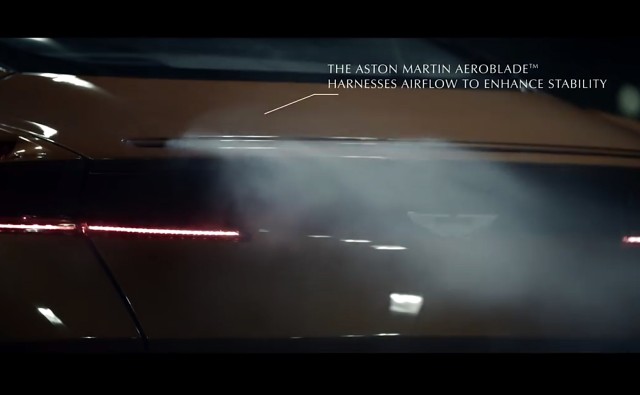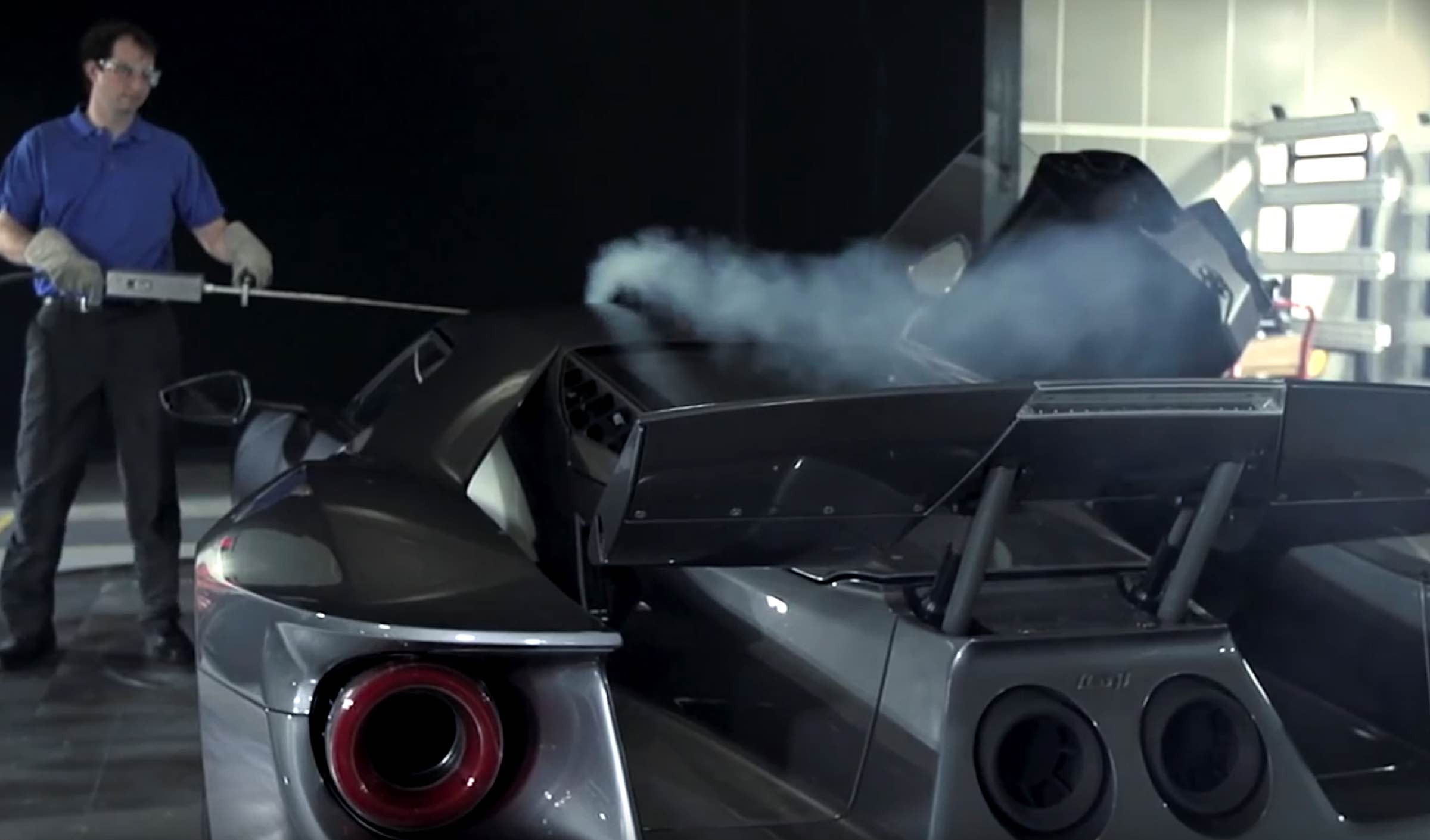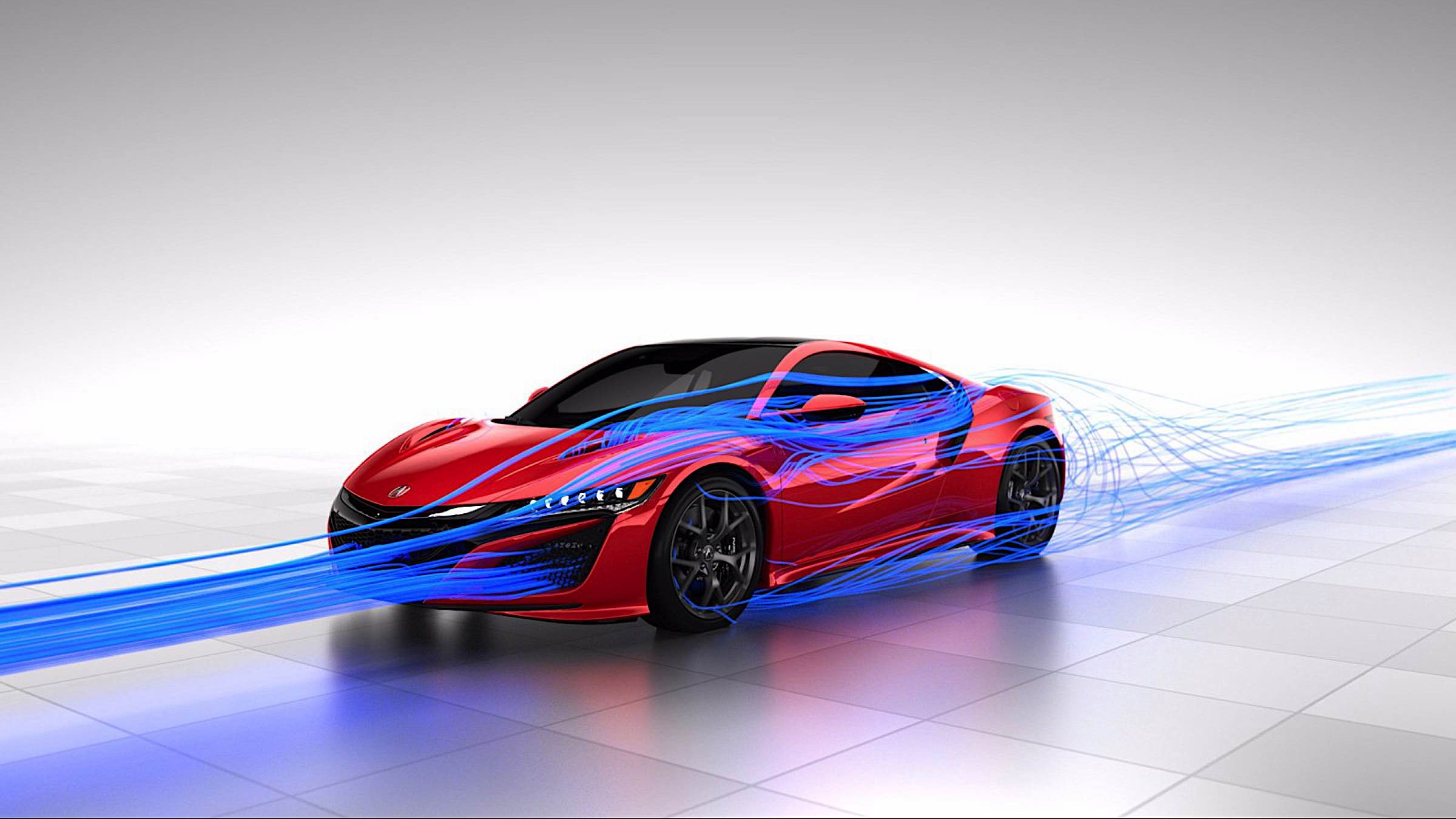A virtual wing? What the heck is that? More manufactures are using aerodynamic tuning than you might realize, but lets explore something Aston Martin calls an “Aeroblade” on their DB11. Basically, they re-route air passing over the C-pillars and force it out of a tiny area in the rear trunk lid which acts like a spoiler as the car cuts through the air. Even more amazing? It works! Check out the video Aston Martin released, and watch as they prove with a wind tunnel and smoke that there is a “virtual spoiler” created with their clever aeroblade.
Aston Martin even snuck in a portion of their aeroblade that can extend outward when there is excess air channeled over the roofline of the car to create even greater downforce at high speeds. The combination of the aeroblade and extension removes the need for a large wing, spoiler, or upswept tail on the trunk lid. A large spoiler might not seem like an issue for some of us, but the DB11 engineers wanted to design their car to have stability at high speeds that normally comes from a spoiler, without having a spoiler that would interfere with the look they wanted.
Aston Martin isn’t the only company routing air through the body, but the aeroblade is probably the most subtle. You can also find a similar features on the Ford GT, Acura NSX, or McLaren 570S. Although some manufactures choose active aero like the Ford GT, some choose the more traditional route with body aerodynamics that don’t change with speed like the new Acura NSX.
Left shows active aero wing on Ford GT. Right is the Acura NSX without active aero
Regardless of how aerodynamic performance is achieved, it’s clear that top manufacturers and race teams understand its importance since countless hours are spent in wind tunnels and virtual analysis.

























